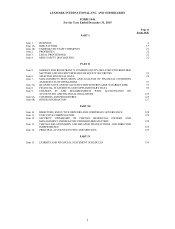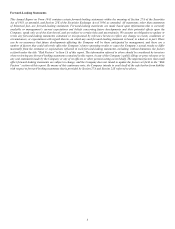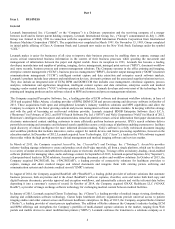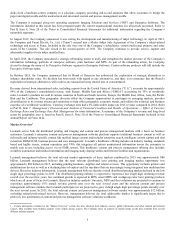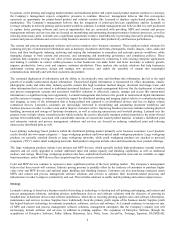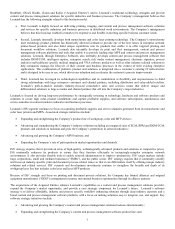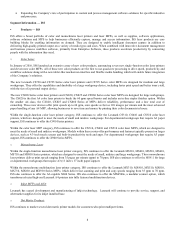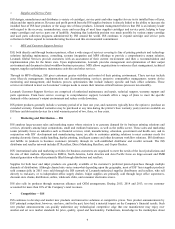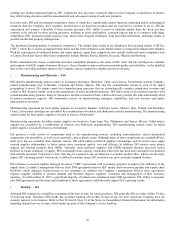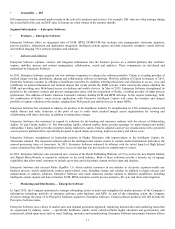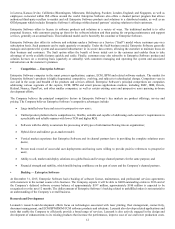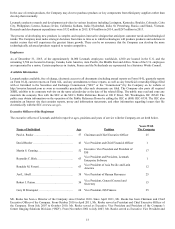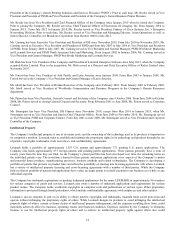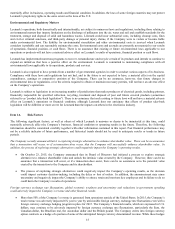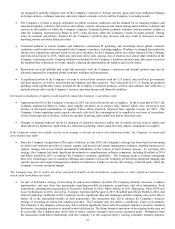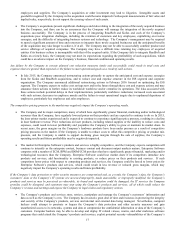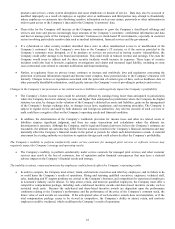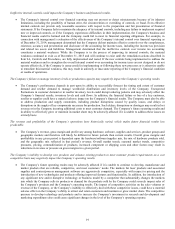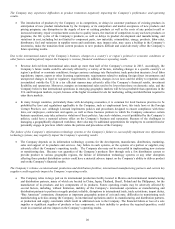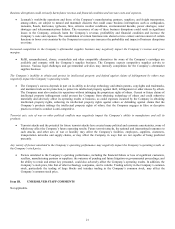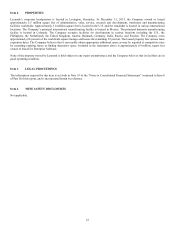Lexmark 2015 Annual Report Download - page 16
Download and view the complete annual report
Please find page 16 of the 2015 Lexmark annual report below. You can navigate through the pages in the report by either clicking on the pages listed below, or by using the keyword search tool below to find specific information within the annual report.
12
in Lenexa, Kansas; Irvine, California; Bloomington, Minnesota; Helsingborg, Sweden; London, England; and Singapore, as well as
employees co-located within ISS offices around the world. Enterprise Software also offers a channel partner program that allows
authorized third-party resellers to market and sell Enterprise Software products and solutions to a distributed market, as well as an
OEM program which includes Enterprise Software’s offerings within channel partners’ existing solutions to their customers.
Enterprise Software offers to license its software products and solutions in a variety of ways. The traditional method is to offer
perpetual licenses, with customers paying up front for the software/solution and then paying for on-going maintenance and support
services, generally on an annual basis. This traditional model can be hosted by the customer or Enterprise Software.
Enterprise Software also offers its software and solutions under a Software as a Service (“SaaS”) model where customers pay on a
subscription basis. Such payments can be made quarterly or annually. Under the SaaS business model, Enterprise Software generally
manages and operates the system and associated infrastructure in its secure data centers, allowing the customer to maintain focus on
their business and customers. The SaaS option offers the benefit of lower initial cost to the customer and enables them to take
advantage of newly available features quickly and easily. Finally, customers may also subscribe to Enterprise Software product and
solution licenses on a recurring basis (quarterly or annually) with customers managing and operating the system and associated
infrastructure on the customer’s premises.
• Competition — Enterprise Software
Enterprise Software competes in the smart process applications, capture, ECM, BPM and related software markets. The market for
Enterprise Software’s products is highly fragmented, competitive, evolving, and subject to technological change. Competitors vary in
size and in the scope and breadth of the products and services offered. Enterprise Software’s principal competitors are companies
addressing various segments of the capture, ECM, BPM and smart process applications markets, including EMC, IBM, Oracle,
Hyland, Nuance, OpenText, and other smaller companies, as well as certain existing users and prospective users pursuing in-house
development efforts.
The Company believes the principal competitive factors in Enterprise Software’s key markets are product offerings, service and
pricing. The Company believes Enterprise Software’s competitive advantages include:
Large installed user base and access to prospective new users;
Unified product platform that is comprehensive, flexible, scalable and capable of addressing each customer’s requirements in
a predictable and reliable manner with lower TCO and higher ROI;
Software with the ability to automate the processing of all types of information flowing into an organization;
Hybrid direct and indirect go-to-market model;
Vertical market experience that Enterprise Software and its channel partners have in providing the complete solutions users
desire;
Proven track record of successful user deployments and having users willing to provide positive references to prospective
users;
Ability to sell, market and deploy solutions on a global basis and leverage channel partners for the same purpose; and
Financial strength and stability, which instills buying confidence on the part of users and the Company’s channel partners.
• Backlog — Enterprise Software
At December 31, 2015, Enterprise Software had a backlog of software license, maintenance, and professional services agreements
with customers in the normal course of its business. The Company expects it will be able to fulfill outstanding orders in 2016 and of
the Company’s deferred software revenue balance of approximately $197 million, approximately $180 million is expected to be
recognized over the next 12 months. The dollar amount of Enterprise Software’s backlog related to unfulfilled orders is not material to
an understanding of the Company’s overall business.
Research and Development
Lexmark’s research and development efforts focus on technologies associated with laser printing, fleet management, connectivity,
document management, and ECM/BPM/DOM/CCM software products and solutions. Lexmark also develops related applications and
tools that enable the Company to efficiently provide a broad range of services. Lexmark is also actively engaged in the design and
development of enhancements to its existing products that increase the performance, improve ease of use and lower production costs.


